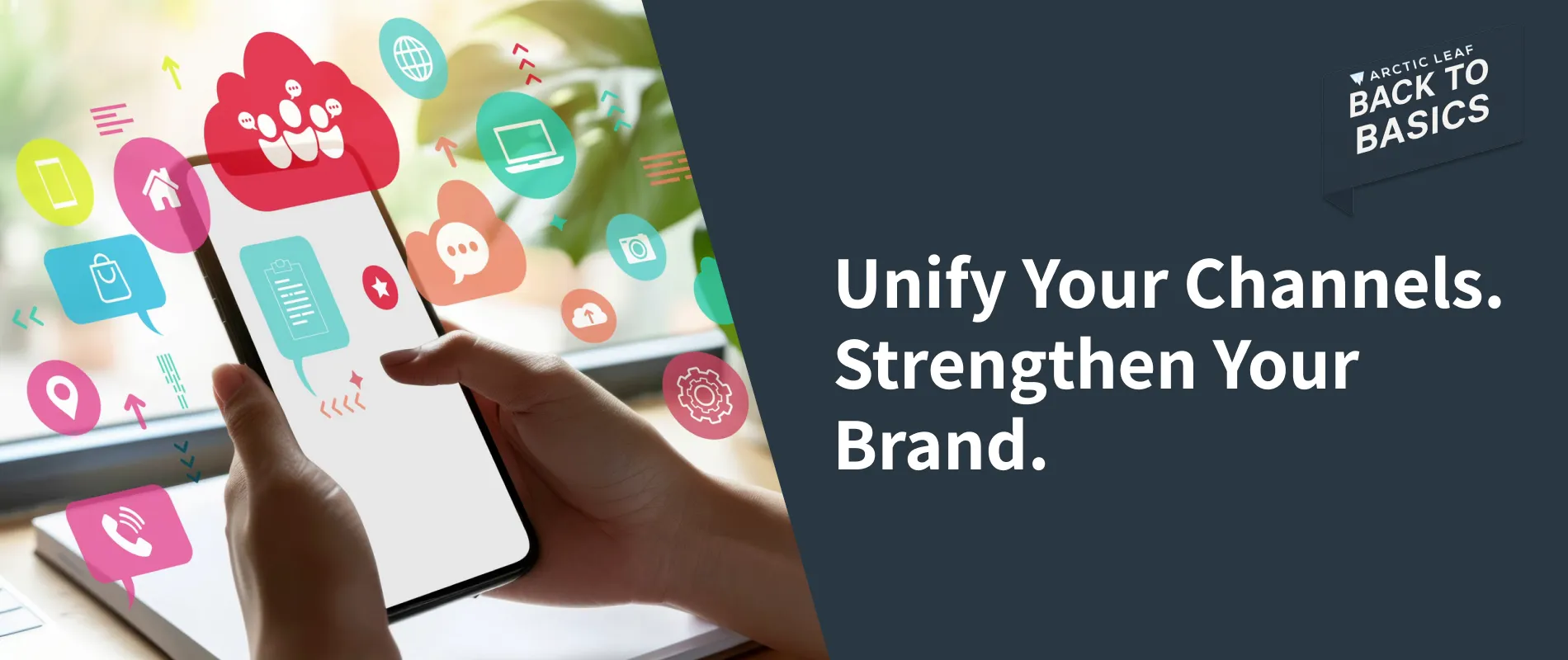What is Omnichannel Marketing & How Can It Grow Your Business?
Key Takeaways:
-
Omnichannel marketing connects digital and physical touchpoints for a smooth journey.
-
It keeps messaging consistent across all platforms to build trust and loyalty.
-
Using data helps personalize experiences and keep customers engaged.
-
Integrating the right tools improves performance and refines your approach.
-
Omnichannel marketing builds stronger connections and fuels business growth.
Customers don’t think in channels. They expect a smooth, consistent experience whether they’re scrolling, shopping, or visiting a store. Omnichannel marketing connects every touchpoint so your brand stays recognizable and your message stays clear. No gaps. No confusion. Just a direct path from interest to action. Businesses that get this right keep people engaged, build loyalty, and see real growth. Here’s how it works and how to make it part of your strategy.
Understanding Omnichannel Marketing
Omnichannel marketing focuses on delivering a unified brand presence across all platforms, so that whether someone interacts with your business online, through a mobile app, or in a physical store, the messaging and interaction remain aligned.
A channel is any way a business connects with its audience, including websites, social media, email, mobile apps, and physical locations. Each channel serves a purpose, but without integration, they can feel disconnected.
This is where omnichannel marketing stands apart. Unlike multi-channel marketing, where channels operate independently, or cross-channel marketing, where channels work together but don’t always provide a coordinated strategy, omnichannel marketing places the person at the center. Every touchpoint is connected, creating a smooth and cohesive journey.
Omnichannel vs. Multi-Channel and Cross-Channel Marketing
|
Marketing Approach |
Definition |
Pros |
Cons |
|
Omnichannel Marketing |
Integrates all digital marketing channels and customer touchpoints into a single, coordinated approach. Customers can switch between channels without disruption. |
- Consistent brand experience - Higher retention - Stronger brand loyalty |
- Requires advanced technology and data integration - Can be complex to set up |
|
Multi-Channel Marketing |
Uses multiple channels (social media, email, website, paid ads, physical stores) to engage buyers, but each operates independently. |
- Broad reach across platforms - Easier to implement than omnichannel |
- Inconsistent messaging and experience - Channels may compete rather than work together |
|
Cross-Channel Marketing |
Channels work together, allowing buyers to move between them, but without full integration. For example, an online ad leads to an email campaign that directs to a landing page. |
- More connected experience than multi-channel - Can improve customer engagement |
- Still lacks full integration - Some buyer data may be siloed |
Successful Omnichannel Marketing Campaigns
Case Study: Myntra - Insider and Virtual Try-on
What They Did: Myntra integrated both online and offline approach through its Myntra Insider program and augmented reality (AR) virtual try-on feature. The Insider program rewards people for purchases made across both digital platforms and physical stores. The virtual try-on feature allows users to experiment with clothes and accessories in a digital space using AR.
How It Exemplifies Omnichannel: Myntra combines both digital and physical channels in a way that’s steady and interconnected. Shoppers earn rewards whether purchasing online or in-store, and the virtual try-on feature bridges the gap between online browsing and in-store interaction, allowing users to engage with products in a lifelike, digital environment.
Why It Works: The integration of multiple channels creates a unified approach, keeping people them engaged and loyal across all touchpoints. The AR try-on feature reduces the uncertainty of online shopping, while the Insider program builds brand loyalty and encourages more purchases. By merging physical and digital worlds, Myntra keeps shopping consistent, convenient, and rewarding.
Case Study: Starbucks - Rewards App
What They Did: Starbucks created the Starbucks Rewards app to solve customer pain points. Users can find nearby stores, skip the line, order and pay ahead, and get personalized recommendations based on things like location and past orders. Buyers can also add funds and earn loyalty rewards, like free food and drinks.
How It Exemplifies Omnichannel: The app links the digital interaction with the in-store one. People order through the app, but the rewards and personalized offers are redeemed in-store. Everything stays connected, whether online or in person.
Why It Works: The app simplifies the interaction. No more waiting in line, and users earn rewards for loyalty. It adds value, keeping people using it and coming back. Starbucks keeps people engaged across both digital and physical channels, making sure everything always works.
Implementing an Omnichannel Strategy for E-Commerce and B2B
To develop an omnichannel strategy:
-
Understand Your Customer: Analyze behaviors and preferences to tailor interactions across digital marketing channels.
-
Integrate Channels: Make sure all platforms, from social media to your website, work together to provide a consistent message.
-
Leverage Data: Utilize customer data to personalize experiences and anticipate needs, increasing engagement.
-
Maintain Consistency: Keep branding and messaging uniform across all channels to build trust and recognition.
-
Optimize Continuously: Regularly assess and adjust strategies based on performance metrics and customer feedback.
For B2B companies, integrating direct marketing efforts with digital platforms can improve communication and strengthen client relationships. A paid media agency can help amplify these efforts, making sure that paid campaigns complement and reinforce your broader omnichannel strategy.
Tools and Platforms for Omnichannel Marketing
Effective tools can facilitate the implementation of an omnichannel strategy include:
-
Customer Relationship Management (CRM) Systems: Centralize customer data to inform personalized marketing efforts.
-
Marketing Automation Platforms: Automate campaigns across various channels, ensuring timely and relevant communication.
-
Analytics Tools: Monitor shopper interactions and campaign performance to guide data-driven decisions.
Content marketing services can also play a pivotal role in aligning your messaging across channels, helping to create cohesive and engaging interactions for your audience.
Selecting the right tools depends on your business needs and the digital marketing channels you aim to integrate.
Conclusion
Adopting an omnichannel marketing strategy can take customer engagement to the next level and fuel business growth. By offering a consistent, personalized experience across all touchpoints, businesses can build stronger connections with their audience.
Partnering with Arctic Leaf, a seasoned digital B2B marketing agency, can help you navigate the complexities of omnichannel marketing and make sure your business connects with your followers across every platform.









